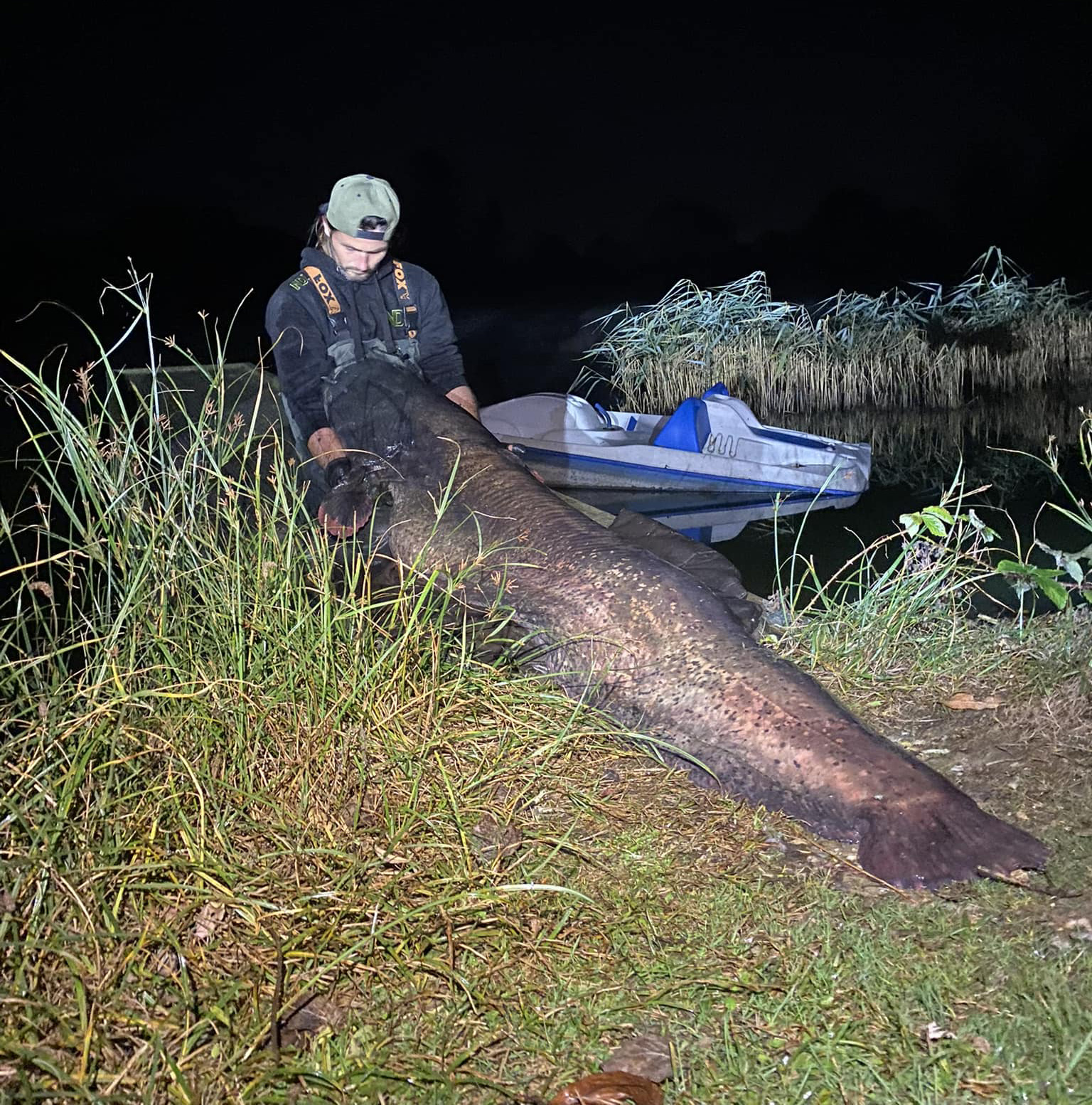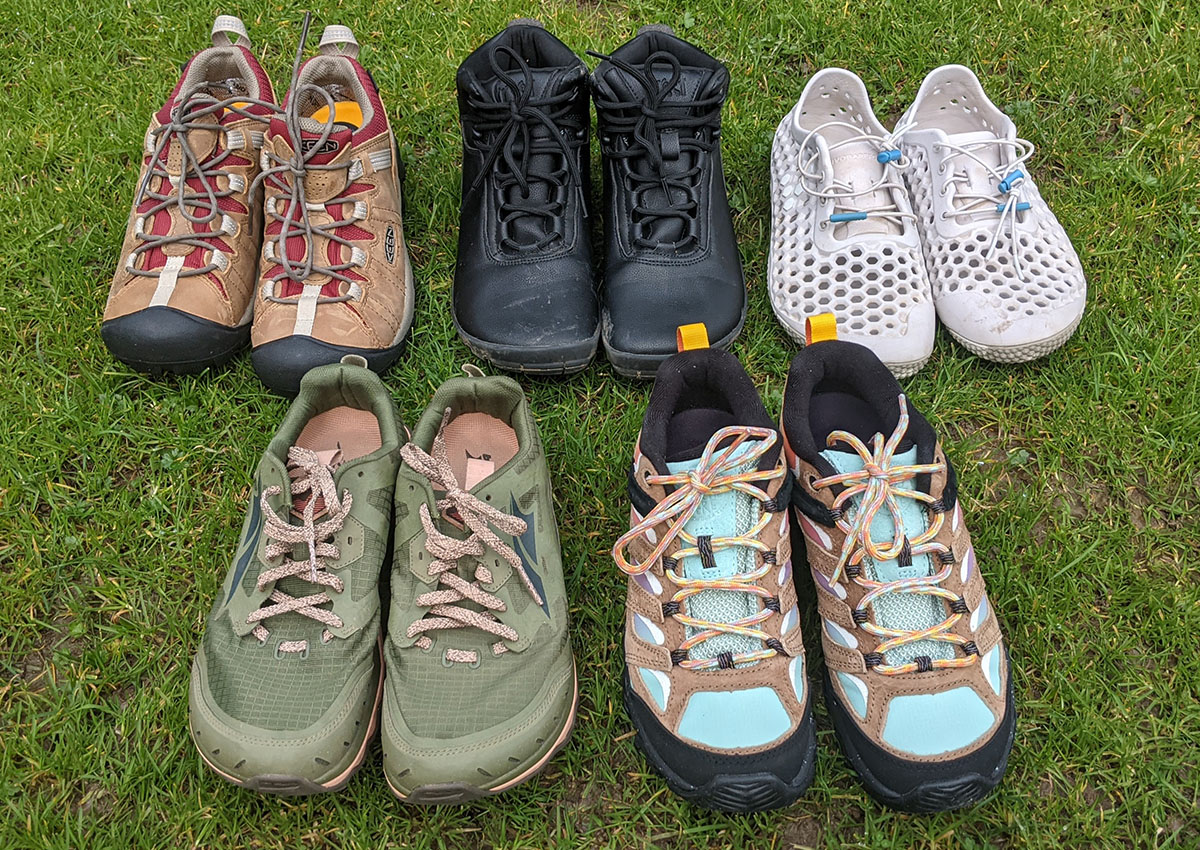The Best Winter Running Gear: Trail, Pavement, and Gravel Tested
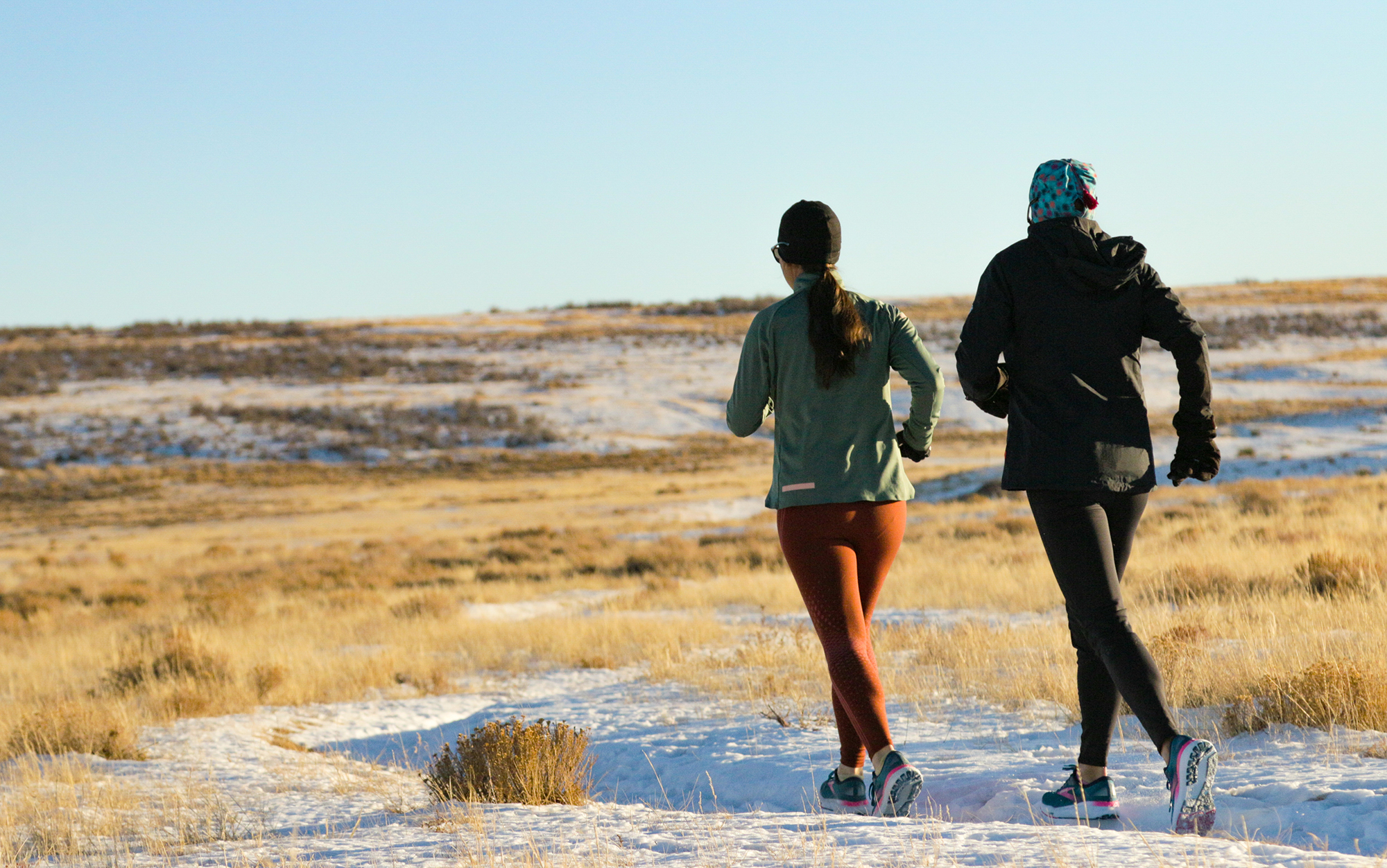
We may earn revenue from the products available on this page and participate in affiliate programs. Learn More ›
Most runners feel some sense of mourning when winter fully sets in, and long days and easy temperatures are gone. Early evenings, snowy days, and frigid winds are generally no great recipe for an enjoyable run. But that doesn’t always have to be the case. Even winter in iceboxes like Wyoming offer plenty of decent days to log miles. But the difference between a nice run that leaves you rejuvenated and a suffer-fest that will most certainly prevent you from getting out the next time is often made in gear.
Fortunately, winter running gear, like most gear, has improved significantly in the last few decades. We tried dozens of pieces to find the best choices to outfit you from top to bottom so cold temperatures will no longer be a barrier to your winter fitness and mental health goals.
How We Tested the Best Winter Running Gear
Winter in the high plains of southeast Wyoming often rolls through somewhere in the middle of October and offers only brief reprieves from its icy grasp until May. So for more than two months, two gear testers and I logged hundreds of miles on pavement, trails, and gravel roads in everything from full-on blizzards to brisk, single-digit mornings, to windy, 30-degree days.
The three of us typically run 12 months of the year, covering thousands of miles.
We evaluated gear for durability, moisture wicking, ability to layer, and adaptability to various conditions. What you’re looking for will obviously depend on temperature and conditions, as well as how warm you like to stay. As a result, we offer a few options in several categories to help you decide what will be the best fit from top to bottom.
Best Winter Running Gear: Reviews & Recommendations
Best Hat: Smartwool Active Beanie
Smartwool
See It
Pros
- Soft
- Lightweight
- Packs up small
Cons
- Not warm enough for very cold days
Key Features
- 53 percent merino wool and 47 percent Tencel lyocell, a fiber made from wood pulp
- Small reflective logo and stripe
- Double-layer band and single layer top
Don this Smartwool hat on any cold morning or midday run where either the temperature or breeze will nip your ears. Merino wool and Tencel are surprisingly soft, breathable, and durable. The double-layer band kept my ears warm, but the thin layer on the rest of the hat provided some warmth without feeling like it was smothering me. After many hours running and sweating, it also has remained relatively odor-free. When temperatures warmed and I no longer needed it, the hat balled up small enough to shove into a pocket into my running tights or coat.
If you need extra ear protection, or you’re running on particularly frigid days, try the Craft Microfleece Hat, which boasts many of the Smartwool characteristics for a soft hat, but is thicker.
Best Base Layer Shirt: Arc’teryx Norvan Crew Shirt
Arc’teryx 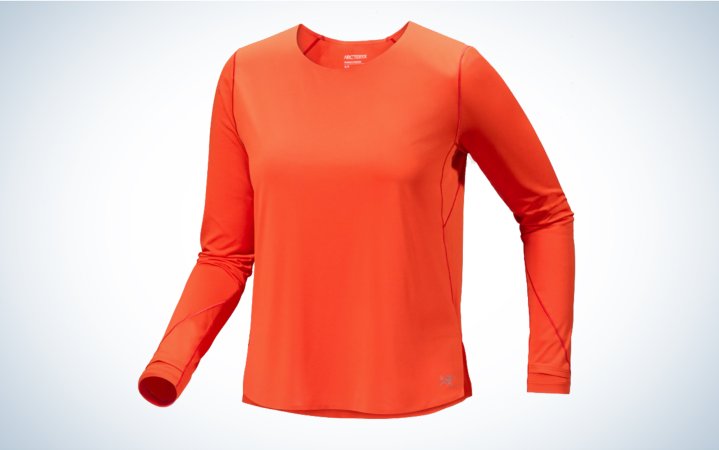
See It
Pros
- Incredibly soft
- Attractive cut
- Lightweight
- Warm
- Smooth seams to prevent chafing
Key Features
- Phasic FL polyester front
- Knit mesh back
- Laminated neckline
- Side split
- Thumbholes
This shirt felt like butter against bare skin, and proved to be the perfect base layer for all of my cold weather runs. It was not warm enough on its own in very cold weather, but on a couple of midday runs was sufficient paired with a light vest.
The thumbholes keep the shirt in place, and the laminated neckline and smooth seams prevent chaffing. It fits more loosely than many other base layer options, but because it is so lightweight it didn’t bunch.
We also tested the Pearl Izumi Transfer Wool Long Sleeve Baselayer, which felt similarly soft, lightweight and warm, but fit much more tightly than the Arc’teryx base layer. The how-to-wash instruction tags are also sewn on the outside, preventing them from chafing your skin but also making it look like your shirt is on inside out.
Anyone looking for a midweight base layer top could check out the Patagonia Capilene Midweight Crew. Its 100 percent polyester is warm and soft, but despite the company’s claims of odor control, another tester and I both noticed odor after one run, which results in more laundry than I prefer to do with my athletic clothes.
Best Vest: Norvan Insulated Vest
Arc’teryx 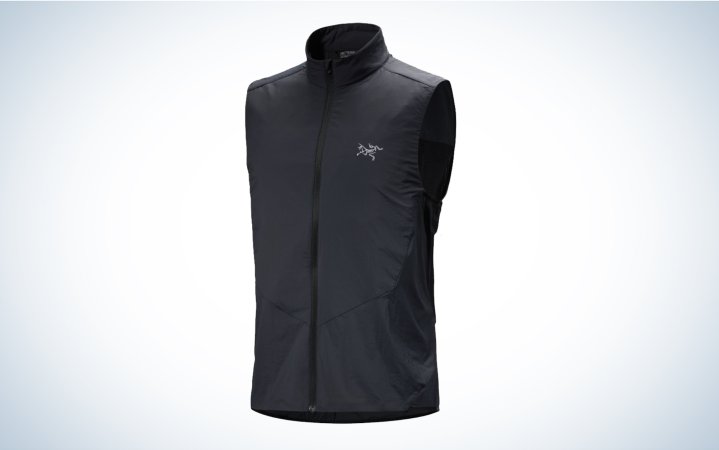
See It
Pros
- Lightweight
- Breathable
- Vest stuffs into pocket
- Warmer, insulated front and lightweight back
Cons
- Pricey
- Only one small, rear facing pocket
Key Features
- Coreloft insulation
- DWR water repellent finish
- One pocket
Most runners either love or hate vests. For those who love them, this is a great pick. It’s feather-light but surprisingly warm, providing insulation and wind resistance particularly on the front and lower sides. It’s a great choice for really cold days paired under a jacket or for warmer days over a light or midweight base layer.
If you want a warmer, more insulated vest, try the Pearl Izumi Expedition Pro Alpha. This vest offers two spacious, zipped pockets on the front and a smaller zipped pocket on the back.
Best Running Jacket: Craft ADV Subz Running Jacket 3
Craft 
See It
Pros
- Surprisingly warm
- Not bulky
- Fit yet loose enough in the torso to allow layering
- Attractive cut
Cons
- Arms are not wind or water resistant
- Multiple letters in the Craft logo came off after a couple uses
Key Features
- Thumb holes
- Reflector stripes
- 100 percent polyester front
- 88 percent recycled polyester and 12 percent elastane back
- Two front pockets
- Taped bottom hem
This jacket saw a lot of miles between myself and another tester, and both of us noted its surprising warmth and flexibility. The thumbholes keep it put no matter what terrain you’re careening up or down and also keep your wrists covered on very cold days. The quilted front provides an added layer of warmth, which is particularly handy for those who prefer not to wear vests.
The soft feel provides comfort and reflective strips on the arms give an added layer of protection for anyone running on busy streets in low or no light.
Its stretchy polyester and elastane sleeves also molded to my waist and tied easily when I heated up and no longer needed the jacket, which is not always the case with running jackets.
For a thicker, looser-fitting jacket, try the Patagonia R2 CrossStrata Jacket. Our tester noted the possibility that the zipper could chafe at her chin. Otherwise, it was warm and more breathable than expected for a layer that thick.
Best Windbreaker: Mammut Aenergy WB Hooded Jacket
Mammut 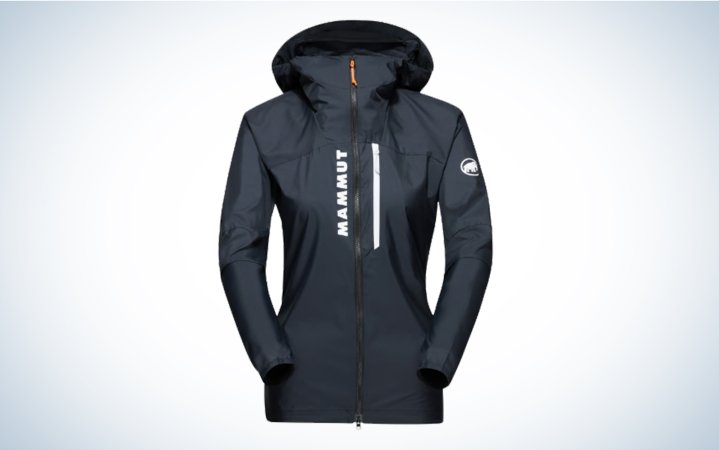
See It
Pros
- Waterproof
- Windproof
- Lightweight
- Large hood cover hat
Cons
- Must be worn over layers on very cold days
Key Features
- 100 percent recycled polyamide
- Two-way zipper
- Zippered chest pocket that jacket folds into
- Adjustable hood and drawstring
Our tester fell in love with this lightweight windbreaker, noting its roomie torso, pockets, and surprising breathability for a shell. The Mammut Aenergy WB hooded jacket is made from recycled polyamide and weighs just 123 grams, making it incredibly light. Our tester wore it over and over in wind and snow and stayed warm and dry.
She noted how sturdy the fabric and construction felt despite its lightweight design. It’s also baggie enough to fit on top of warm layers but fitted enough it doesn’t get in the way of running. The large hood can drape over a hat brim to help protect your face from snow and wind, but it also can adjust back.
Best Gloves: Craft Hybrid Weather Glove
Craft 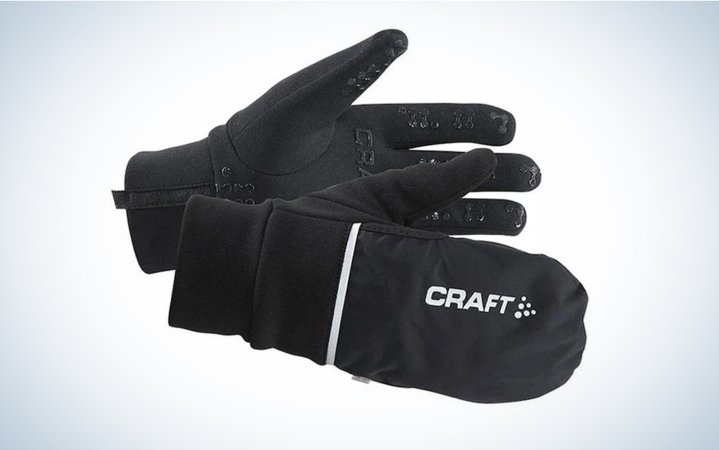
See It
Pros
- Lightweight
- Warm
- Smartphone adaptable finger pads
- Adaptable to variable conditions
Cons
- Thumbs can become cold
- Not heavy enough for people with cold sensitive hands
Key Features
- Wind and waterproof outer
- Mitten covers that tuck back into pocket
- Silicon palm and fingerprints
I’ve worn these gloves in snow, wind, and dark, early morning single digits and they have risen to the occasion. The mitten covers keep wind and moisture off your fingers and seal in body heat. But when my hands begin to warm up, or the sun finally comes out, the mitten covers tuck back into a hidden pocket on the top of the hands, a vast improvement on the normal convertible gloves where the mitten cover snaps back but still flaps around.
If mittens aren’t your thing, Patagonia makes the Ri Daily Glove. It’s a warm but lightweight five-finger glove with a touchscreen compatible finger, grip on the hands, and a handy loop on the cuff for pulling on.
Best Warm Tights: Craft ADV Subz Running Wind Tights 2
Craft 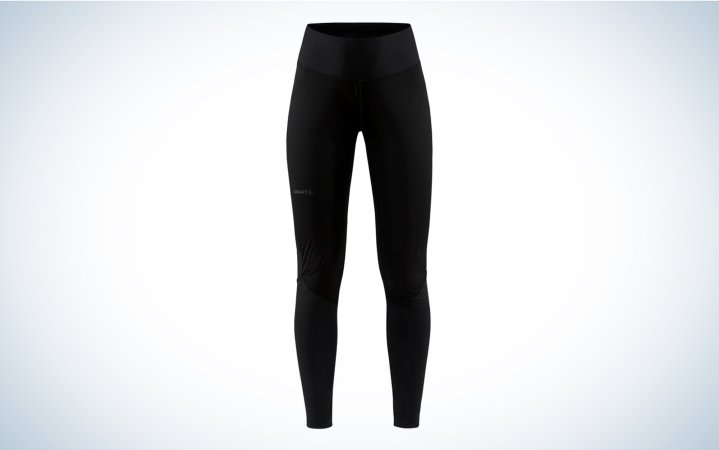
See It
Pros
- Warm
- High waist for snug fit
- Reflective logos and stripes for running at night
- Wind front
Cons
- Runs small
- Limited pockets and no hip pocket for larger items
Key Features
- Zipper at bottom leg
- Wide waistband
- Wind and waterproof fabric on front
- Recycled polyester brushed jersey back and lower leg
- Flatlock seams
These were, hands down, the best tights for winter running in a variety of conditions. Our tester and I both ran in a variety of conditions from mild, sunny days in the mid-20s to mornings in the single digits with wind. The windproof front keeps your quads warm and protected, while the brushed jersey back keeps the back of your legs warm yet allows them to breathe. They’re “considerably more waterproof than your average pair of tights,” noted one tester, and held up on one of her many snowy runs. They also fit well and stay put.
The tights don’t, however, have a pocket on the hip for a cell phone, dog e-controller, or handful of tissues, which may be a downside for anyone used to those pockets on most running tights.
The Smartwool Intraknit Active Base Layer Bottom is also a good option for a warm tight without a water or wind proof outer. The wool and Tencel fabric feels soft and warm on chilly days. Pair them with a thin shell on really cold runs or in strong winds or heavy snow.
Best Lightweight Tights: Patagonia Peak Mission Tights
Patagonia 
See It
Pros
- Wide waistband
- Two pockets large enough for cell phone
- Small zippered back pocket for key or cash
- Lightweight but relatively warm
Cons
- Slipped some while wearing
Key Features
- Two hip, drop-in pockets
- Brushed-terry back fabric
- Gusseted construction
- Recycled nylon, polyester, and spandex
These tights fit snuggly and have a wide waistband for added comfort. They are warmer than they appear to be, and both the other tester and I appreciated their gusseted fit. I felt they slipped some while running, though another tester said they stayed put for all her runs.
Best Socks: Darn Tough Element Micro Crew Lightweight Running Sock
Darn Tough 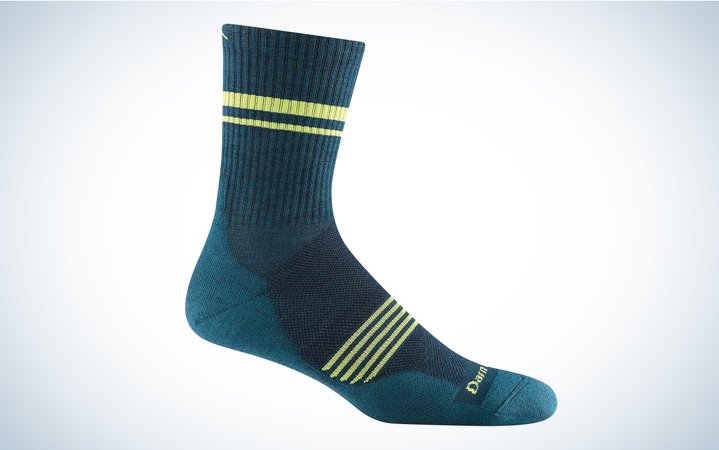
See It
Pros
- Lightweight
- Warm
- Don’t slouch or bunch
- Added cushion on toes, heels, and bottom of the feet
Cons
- May be too thin for exceptionally cold weather
Key Features
- 7.5 inches from heel to cuff
- Merino wool
- Made in Vermont
- Guaranteed for life
Realistically, most well-made wool socks will be a good fit for winter running. Cotton socks are a bad idea because they aren’t as warm and can be dangerous in the cold if they become wet from sweat or snow. But after testing many socks, these Darn Tough socks came out on top because they’re thin, have good flexibility, and stretch well. They are also warm but won’t cause your feet to overheat while running.
Best Shoes: Brooks Cascadia 18 GTX
Brooks 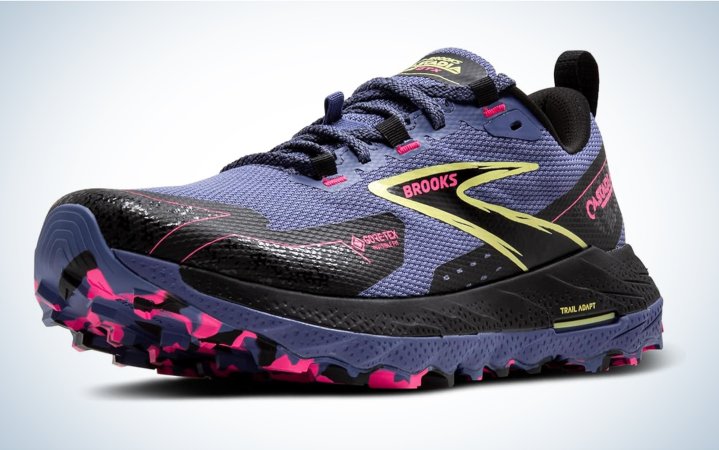
See It
Pros
- Comfortable
- Midsole flexes outward to prevent foot from being squeezed
- Durable
- Good grip on textured, chunky ice and snow
Cons
- Low shoe topline that allows snow to creep in
Key Features
- Waterproof Gore-Tex outer layer
- 8 mm midsole drop
- Designed for trail running
For cold, snowy runs, this is the best shoe. The Gore-Tex keeps feet dry but also allows them to breathe. Our tester noted his feet stayed dry running through 3 inches of snow, and his feet didn’t sweat while wearing thin synthetic and wool socks. He particularly noted their grip on icy conditions and while running downhill. While they aren’t the top shoe for rugged downhill running, they worked well across varied terrain. They also seemed durable, holding up to sharp, crusty snow that often chews up the outside of most running shoes.
How to Choose the Best Winter Running Clothes
Your Internal Temperature
Figuring out the best clothes for winter running requires first thinking about how hot your body becomes while exercising. Are you someone who starts cold and immediately heats up? If so, you may want to either run in layers or start with lighter clothes and know you’re choosing a chillier run at the beginning to not overheat by the end. Conversely, if you know you’ll stay cold, choose warmer items and layer up.
Traction Control
If you’re running on ice or snow, you may want to consider a pair of running traction control like Yaktrax or the Black Diamond Distance Spike. But be aware that while they may help you stay up on ice and snow, they don’t do well on mixed surfaces if you’re running on ice and also concrete or asphalt.
Run Length
Thin, lighter layers might work for a fast, shorter run. But for longer runs, consider warmer layers that you can shed or keep on depending on how the weather changes. You don’t want to get caught miles from home in an unexpected blizzard in clothes meant for full sun in temperatures in the 30s.
FAQs
While there’s no set number of layers for winter running, consider how cold it is outside, if it’s windy, and if it’s snowing. Wearing a lightweight, breathable base layer is always the best place to start. From there, decide if it’s not too cold, you may be fine with a vest or light jacket. If there’s a chance you’ll get wet from sleet or snow, plan to wear a waterproof or at least water resistant outer layer to keep yourself dry. Also consider wearing gloves and a hat or headband to protect skin from possible frostbite if the temperature, or wind chill, drops well below zero.
If temperatures drop into the single digits or below freezing, you will need to cover your face with a balaclava, scarf or face mask of some kind. Frigid temperatures aren’t just unpleasant, they’re potentially harmful to your lungs especially when physically exerting yourself.
This one depends on how cold it is, your comfort level, and how far away from your vehicle or home you plan to run. If you’re not running far, and it’s sunny and not below freezing, you’re probably just fine. Wearing tights underneath your shorts can add warmth without restricting motion. Don’t run in shorts if you plan to run in remote areas or for long distances because winter weather changes quickly, turning a nice day into a dangerous day.
Read Next: Best Running Headlamps
Final Thoughts
Running in the winter is worth it, even on the days when you would really rather not. But cold-weather running can be miserable without the right clothes and gear. Check conditions before you hit the trails, and plan to wear or bring along gloves and a hat. Layering is a great idea for variable conditions, especially on long runs. And mostly have fun out there, running shouldn’t just be for warm summer days.
Read the full article here




